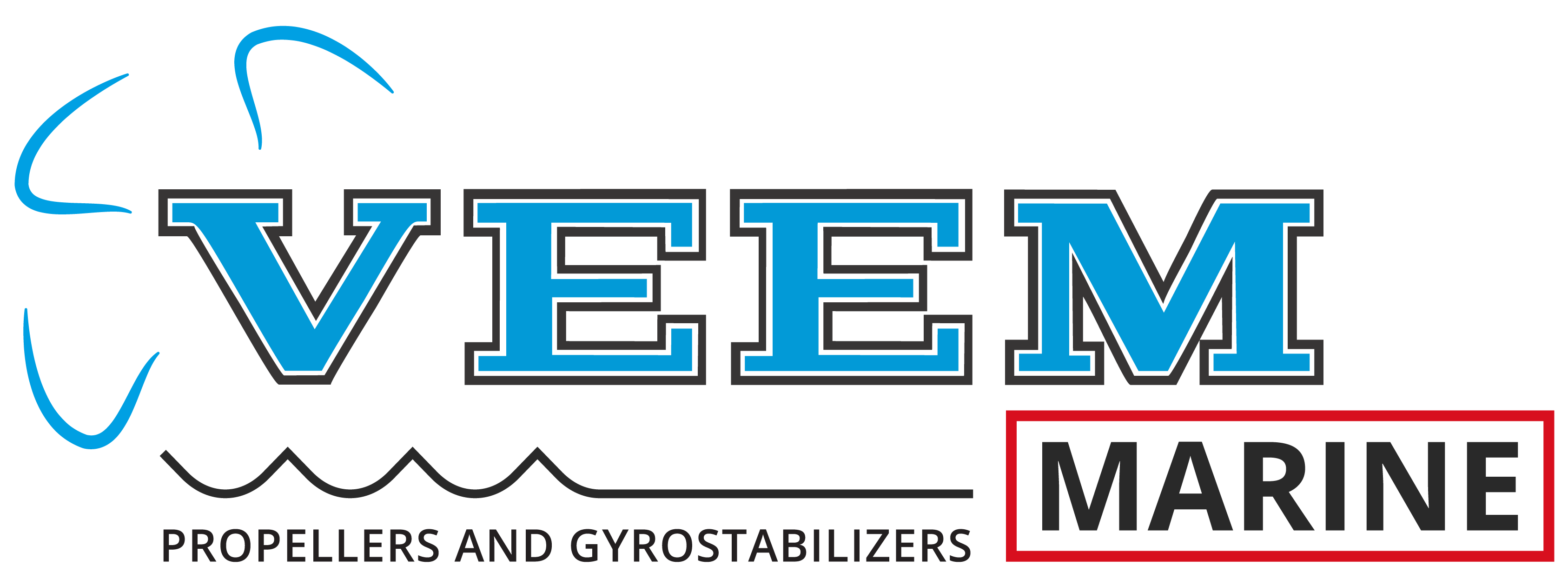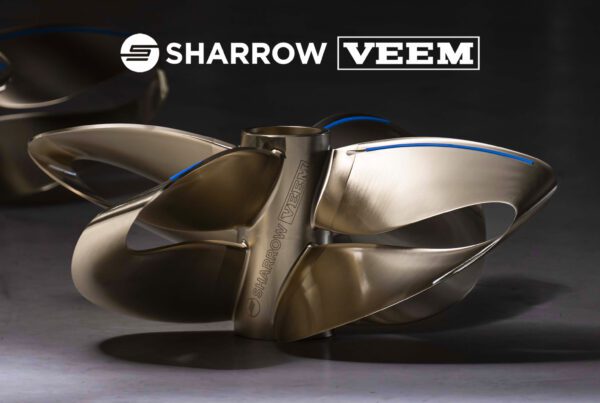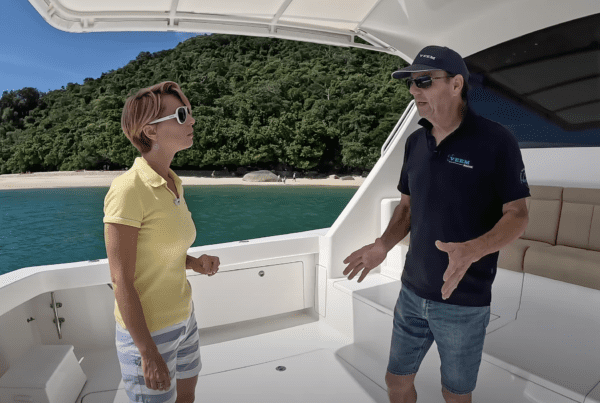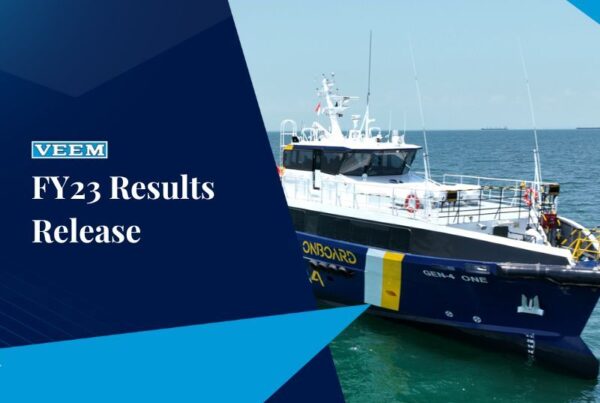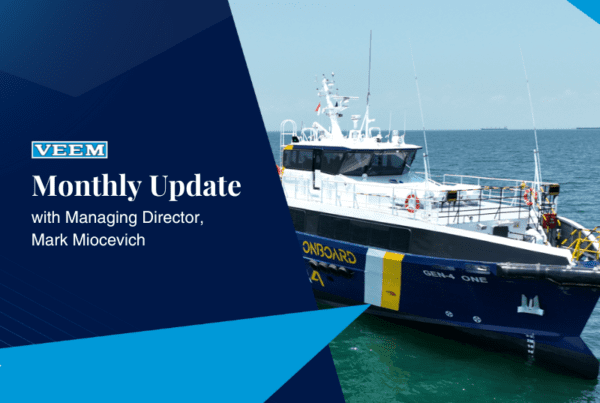Gyrostabilizers have the potential to produce up to 99% roll reduction. The roll reduction varies with the wave height, the wave period and with the characteristics of each vessel. Typically in up to moderate seas, you can expect to see 60-70% roll reduction with a VEEM Marine Gyrostabilizer. As the sea state increases, reduction will back off slightly. We size our systems effectively to produce similar performance to a fin system when underway. When the vessel is travelling slowly, or at rest, the performance is outstanding, you can be guaranteed a 90% roll reduction.
Frequently Asked Questions
What size VEEM Marine Gyrostabilizer do I need?
The selection of gyrostabilizer size for various superyachts depends on the displacement of the yacht, the GMT and the wave profile. A heavier yacht with a higher GMT requires a bigger gyrostabilizer.
The most accurate way to find out which VEEM Marine Gyrostabilizer size you need is to fill out the VEEM Gyro Size Calculator. This calculator will give you an instant report based on your vessel information.
Does a VEEM Marine Gyrostabilizer have to be mounted on the vessel centerline?
A VEEM Marine Gyrostabilizer can be mounted anywhere on the vessel within structural reason. Effectively, anywhere where there is adequate structure in the ship to hold the gyrostabilizer down it can be mounted. It does not need to be mounted on the vessel centerline. VEEM Marine Gyrostabilizers do not need to be mounted low in the vessel. Preferably, we would mount them aft of midships to avoid slamming accelerations, but they can be mounted forward. Essentially, there is no limitation to where the gyrostabilizer can be mounted. Typically, they will be mounted in the engine room because there are structural supports already in place, there’s lagging in place, and there’s power and other auxiliary systems already in the location.
How much power does the VEEM Marine Gyrostabilizer consume?
The VEEM Marine Gyrostabilizer is driven by an electric motor, so they require a three-phase power supply. The power requirements vary with the size of the unit, but typically that power is a small fraction of the power consumed by the thrusters. Our experience has been that there is more than adequate power available. If you contact us, we’ll come back to you with what the power requirements are for a system suitable for your vessel.
What are the weights and dimensions of a VEEM Marine Gyrostabilizer?
VEEM Marine Gyrostabilizers vary in size and weight depending on the size and weight of the vessel. Typically, a small gyrostablizer system will weigh approximately 2.5% of the displacement, or the weight of the boat. A large system would weigh in the order of 5% of the vessels displacement. The small versus large decision really depends on what the requirement for the gyrostabiliser is. If it is a complete stabiliation system for rough weather at speed, you might be looking at a weight of 5% of displacement. If it’s just to keep the boat from rolling in moderate to small seas, you might use a 2.5% of displacement installation. Contact us and we can come back to you quickly with an estimate of what your vessel required.
What forces will a VEEM Marine Gyrostabilizer impose on the vessel structure?
VEEM Marine Gyrostabilizers produce large torques in a small space, and that is the beauty of the device. That means that the gyrostabiliser needs to be mounted on structural mounts similar to engine beds. Our advice is to contact us with information about your vessel. We will send you back the loads that you will expect to see on your vessel. Following this, it would be best to contact the shipyard that built the vessel, or contact a consulting naval architect that will provide you with information as to the sizing and design of the mounts.
What happens if the flywheel breaks?
There is a lot of kinetic energy contained in a VEEM Gyro flywheel; it’s a key aspect of the design of the unit. The VEEM Marine Gyrostabilizer flywheels have been designed with infinite structural fatigue life. In addition to that, the aluminium housing that surrounds the flywheel itself has a very small gap between the flywheel and the housing, if there was a crack to form, it would be contained very quickly. In addition to that a key part of the bearing monitoring system are two vibration monitoring accelerometers. Those accelerometers monitor both bearing frequencies and also out-of-balance frequencies. If there was any cracking in the flywheel, that out-of-balance, would very quickly show up and the unit would shut down. Having said that, with an infinite fatigue life design, the chances of that happening are remote at best.
Does the VEEM Marine Gyrostabilizer control pitch motion as well?
VEEM Marine Gyrostabilizers have no significant impact on pitch motion. They can’t be used to reduce pitch motion and they don’t produce pitch motion. They are an independent device that is focused on controlling rolling motion. If there is a significant pitch issue on a new build design or a retrofit vessel, we would assist you with other means of controlling the pitch.
How long does it take a VEEM Marine Gyrostabilizer to start up?
The startup time for VEEM Marine Gyrostabilizers vary with the product size. For example, our smallest model, the VG52SD VEEM Marine Gyrostabilizer, takes 45 minutes to operation and then another 5-10 minutes before it reaches full speed.
How often does a VEEM Marine Gyrostabilizer need to be serviced?
We provide annual service schedules and task lists for all the VEEM Marine Gyrostabilizers. These are routine maintenance items. We don’t expect any servicing outside of that annual requirement. In time, the bearings in the gyrostabilizer may need to be changed out. However, that will be indicated by the monitoring system and be planned as required.
Do I need to dry-dock the yacht to service my VEEM Marine Gyrostabilizer?
One of the major advantages of a VEEM Marine Gyrostabilizer as a stabilisation system is that there is no penetration through the hull. This means that all installation, service and maintenance tasks on a VEEM Marine Gyrostabilizer can be carried out with the vessel in the water. That means that there are no tasks added to the typically busy dry-docking schedule and gyrostabliser tasks don’t have to be scheduled with a dry-dock.
Does a VEEM Marine Gyrostabilizer affect the steering and will it work with the autopilot?
A VEEM Marine Gyrostabilizer has no noticeable effect on the steering of the vessel. There are some very small theoretical forces in the yaw axis, which is the steering axis. However, these are not noticeable and have no impact on the steering at all. As the VEEM Marine Gyrostabilizer produces damping, which is effectively a passive force on the vessel, it can work with the autopilot either on or off, with no special tuning of the autopilot. It has no impact on the autopilot except that it improves course keeping by reducing the yawing produced by rolling.
What effect does the VEEM Marine Gyrostabilizer have on motion?
The VEEM Marine Gyrostabilizer is a roll axis damping device. It dramatically reduces both roll angles and roll rates, independently of any affect on the pitch axis or the heave axis. Pitching motion that is felt by the vessel will not be affected by the gyrostabiliser and will have minimal impact on the performance of a gyrostabiliser. Likewise, heaving motion is not impacted by the gyrostabilizer and won’t impact the gyrostabilizer.
What are the maintenance requirements of a VEEM Marine Gyrostabilizer?
VEEM Marine Gyrostabilizers are delivered with an annual maintenance task schedule. These tasks are standard hydraulic system maintenance tasks which would be included on most hydraulic systems. Outside of the hydraulic system, there is virtually no maintenance required. The annual maintenance can be completed wholly whilst the vessel is in the water. This means that there are no dry-docking tasks that are to be added to what is typically already a compressed dry-docking schedule. Down the line maintenance may include bearing change-outs. Bearing change-outs would be indicated by the bearing monitoring system and will be driven very heavily by the operational profile of the vessel.
Can a VEEM Marine Gyrostabilizer be retrofitted on my vessel?
VEEM Marine Gyrostabilizers are easily retrofitted to any vessel. The gyrostabilizer produces a pure damping force, it doesn’t interact with other stabilization systems if they are fitted. It doesn’t interact with the autopilot system and therefore, there is no programming or software interfaces required with other parts of the vessel. The only requirement for retrofitting a VEEM Marine Gyrostabilizer to your vessel is to find space for it. Preferably, this space would be the engine room. VEEM Marine Gyrostabilizers can be fitted as one single unit or as multiple units, so there are a range of options for either identifying a number of small spaces or one big space for the gyrostabiliser to be located.
What is the wave period dependency on performance?
VEEM Marine Gyrostabilizers work best when the roll motion is at its worst. Gyrostabilisers are fantastic at eliminating what we call harmonic rolling, which is rolling due to the fact that the vessel’s natural roll period is somewhat close to the wave period at the time. Outside of this, the performance reduces but then so does the rolling. Over a broad range of operational conditions, the damping of rolling is very high.
What are the relative merits compared to Zero Speed fins?
A VEEM Marine Gyrostabilizer is a roll damping device that produces the same roll damping torque when the vessel is underway in rough water, in smooth water, or at rest. So, the gyro is performing the same task, regardless of the operation of the vessel. This is similar to zero speed roll fins. However, there are some substantial differences between the two systems. A VEEM Marine Gyrostabilizer is a single piece of equipment, or can be multiple pieces of equipment, if you choose. It is located in the engine room. It is extremely easy to integrate into the vessel because it is in one location. There are no auxiliary systems that need to be run through the vessel and the whole piece of equipment can be mounted in the engine room, which benefits from the lagging that is contained in the engine room. A gyrostabiliser has no hull protrusions, meaning there are no moving parts outside the hull. This is a major advantage when you are drifting or anchored up and you have swimmers in the water. There are no moving parts outside the hull, so there’s no chance of any danger to any swimmers. A VEEM Marine Gyrostabilizer produces no drag because there is nothing in the water. There is a substantial advantage when you are underway because increasing speed does not increase your drag.
Will a VEEM Marine Gyrostabilizers work with existing roll fins?
A VEEM Marine Gyrostabilizer can be installed alongside an existing roll fin stabilisation system. That could be a traditional roll fin stabilisation system or it could be a Zero Speed* roll stabilisation system. A VEEM Marine Gyrostabilizer produces a pure torque, meaning it does not interact in any negative way with any other control systems on the vessel. It can be integrated with trim flaps, T-foils, roll fins or really any form of stabilisation system. There is no contamination of the control being produced by the other systems.
*Zero Speed is a Trademark of Quantum
Does the VEEM Marine Gyrostabilizer conform to class?
All stabilisation systems are currently treated as a comfort system, rather than a safety system, by International Classification Societies. Therefore, there are limited rules surrounding stabilization systems. However, the VEEM range of Gyrostabilisers has been designed such that, if required, type approval for the device can be sought. If you are interested in Type Approval, let us know and we can deliver that with the product.
What options are available for the VEEM Marine Gyrostabilizers?
When you purchase a VEEM Marine Gyrostabilizer, there a number options available for your selection. You can install a VEEM Marine Gyrostabilizer on a working commercial vessel as a motion monitoring system that provides a traffic light indication for various operations. Alternatively, you can sling the precision bearings between two girders which allows you to mount the whole VEEM Marine Gyrostabilizer right down on the hull, reducing vertical space requirements. You can also simply mount the VEEM Marine Gyrostabilizer on soft mounts at the base of the gyrostabilizer.
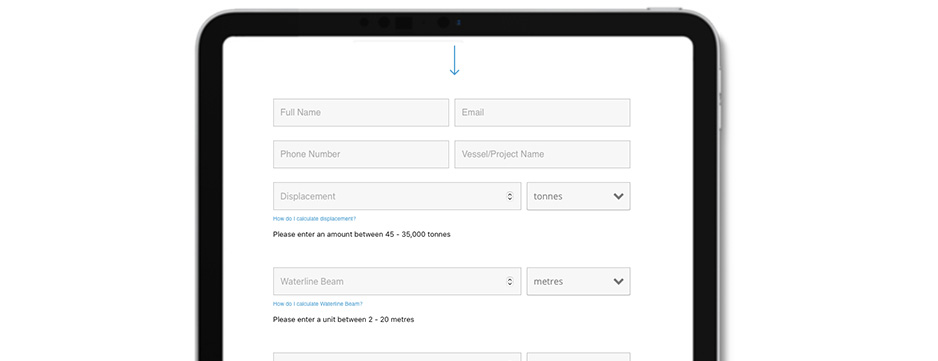

Service and Support
Learn more about VEEM Marine servicing, spare parts, telemetry and remote servicing.
